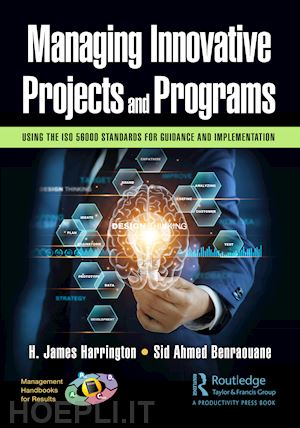Dr. Sid Ahmed Benraouane is a thought leader with more than 20 years of experience in multiple sectors, regions, and industries. He is the Chair of the United States ISO Working Group on Innovation Management System Standard (ISO 56002:2019) and a member of the ISO/SC 42 Joint Committee in charge of developing set of international standards on Artificial Intelligence. Dr. Benraouane advises senior government leaders and executive teams in the MENA region on issues related to exponential technologies, innovation, and digital transformation. He is a speaker at the World Government Summit (UAE) and BAIDEC/MEMTEC conference (Bahrain), and Big Data and Cloud Show (KSA), World Mobility and Autonomous Driving Show (UAE), and Artificial Intelligence Summit (Mauritius). Dr. Benraouane’s latest publication is a contribution on Artificial Intelligence and Robotics in which he addresses the US national AI strategy, published by Taylor & Francis. Dr. Benraouane is a Certified Chief Innovation Officer from the Global Innovation Institute and holds a Ph.D. from the University of Minnesota. Currently, he advises Dubai Government and teaches at Carlson School of Management, University of Minnesota, USA. Dr. H. James Harrington, Chief Executive Officer Harrington Management Systems. In the book, Tech Trending, Dr. Harrington was referred to as "the quintessential tech trender." The New York Times referred to him as having a "…knack for synthesis and an open mind about packaging his knowledge and experience in new ways – characteristics that may matter more as prerequisites for new-economy success than technical wizardry….". The author, Tom Peters, stated, "I fervently hope that Harrington’s readers will not only benefit from the thoroughness of his effort but will also ‘smell’ the fundamental nature of the challenge for change that he mounts." William Clinton, Past President of the U.S., appointed Dr. Harrington to serve as an Ambassador of Good Will. It has been said about him, "He writes the books that other consultants use." Harrington Management Systems (formerly Harrington Institute) was featured on a half-hour TV program, Heartbeat of America, which focuses on outstanding small businesses that make America strong. The host, William Shatner, stated: "You (Dr. Harrington) manage an entrepreneurial company that moves America forward. You are obviously successful." Present Responsibilities: Dr. H. James Harrington now serves as the Chief Executive Officer for the Harrington Management Systems. He also serves as the Chairman of the Board for a number of businesses. Dr. Harrington also serves as the chairman of the Walter L Hurd foundation. Dr. Harrington is recognized as one of the world leaders in applying performance improvement methodologies to business processes. He has an excellent record of coming into an organization, working as its CEO or COO, resulting in a major improvement in its financial and quality performance. Previous Experience: In February 2002 Dr. Harrington retired as the COO of Systemcorp A.L.G., the leading supplier of knowledge management and project management software solutions when Systemcorp was purchased by IBM. Prior to this, he served as a Principal and one of the leaders in the Process Innovation Group at Ernst & Young; he retired from Ernst & Young when it was purchased by Cap Gemini. Dr. Harrington joined Ernst & Young when Ernst & Young purchased Harrington, Hurd & Rieker, a consulting firm that Dr. Harrington started. Before that Dr. Harrington was with IBM for over 40 years as a Senior Engineer and Project Manager. Dr. Harrington is past Chairman and past President of the prestigious International Academy for Quality and of the American Society for Quality Control. He is also an active member of the Global Knowledge Economics Council. Credentials: Dr. H James Harrington was given a lifetime achievement award for his work in process improvement and in innovation by the International Association of Innovation Professionals. H. James Harrington was elected to the honorary level of the International Academy for Quality, which is the highest level of recognition in the quality profession. H. James Harrington is a government-registered Quality Engineer, a Certified Quality and Reliability Engineer by the American Society for Quality Control, and a Permanent Certified Professional Manager by the Institute of Certified Professional Managers. He is a certified Master Six Sigma Black Belt and received the title of Six Sigma Grand Master. H. James Harrington has an MBA and Ph.D. in Engineering Management and a BS in Electrical Engineering. Additionally, in 2013 Harrington received an Honorary Degree of Doctor of Philosophy (Ph.D,) from the Sudan Academy of Sciences. H. James Harrington’s contributions to performance improvement around the world have brought him many honors. He was appointed the honorary advisor to the China Quality Control Association, and was elected to the











